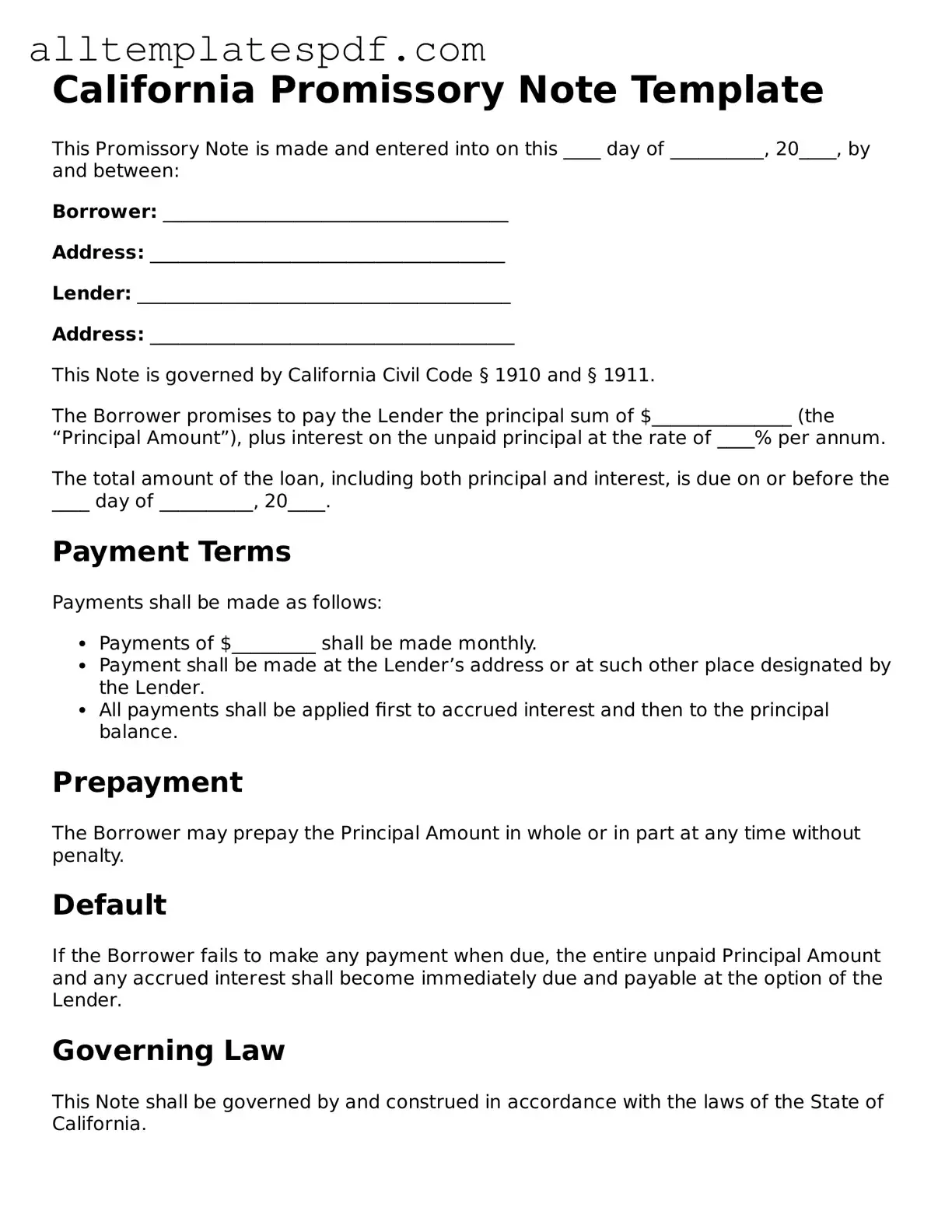Completing a California Promissory Note form requires attention to detail and a clear understanding of the terms being agreed upon. One common mistake is failing to clearly state the names of the parties involved. It is essential to include the full legal names of both the borrower and the lender. Omitting or abbreviating names can lead to confusion and potential legal issues down the line.
Another frequent error is neglecting to specify the loan amount. The amount must be written both in numbers and words to avoid any ambiguity. If only one format is used, it could lead to disputes regarding the actual amount owed. Clarity in this section is crucial for both parties.
People often forget to include the interest rate, which is a vital component of any loan agreement. Without a clearly defined interest rate, the terms of repayment can become unclear. It is important to state whether the interest is fixed or variable and to provide a specific percentage.
Additionally, the repayment schedule is sometimes inadequately detailed. Borrowers and lenders must agree on when payments are due and the frequency of these payments. If this information is vague, it can lead to misunderstandings and missed payments.
Some individuals overlook the importance of including a maturity date. This date indicates when the loan must be fully repaid. Without it, there may be uncertainty regarding the timeline for repayment, which can complicate matters for both parties.
In some cases, people fail to outline the consequences of defaulting on the loan. Clearly stating what happens if the borrower cannot make payments is essential. This section should describe any penalties, fees, or legal actions that may follow a default.
Another mistake is not having the document properly signed and dated. Both the borrower and lender must sign the Promissory Note for it to be legally binding. A missing signature can render the entire document ineffective.
Some individuals neglect to keep copies of the signed Promissory Note. It is vital for both parties to retain a copy for their records. This ensures that there is a reference point for the terms agreed upon should any disputes arise in the future.
People sometimes fail to consult with a legal professional before finalizing the document. While the Promissory Note form may seem straightforward, having an expert review it can help identify potential issues or omissions that could lead to complications later.
Lastly, overlooking the importance of clear language can lead to misunderstandings. Using vague terms or overly complex language can create confusion. It is best to keep the language simple and direct, ensuring that all parties fully understand their rights and obligations under the agreement.
